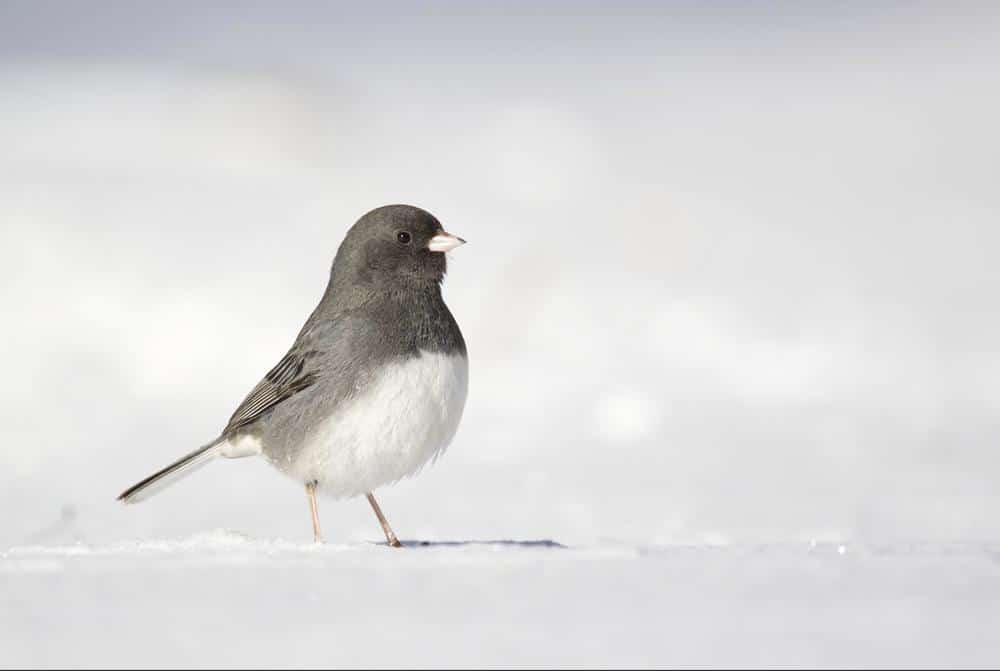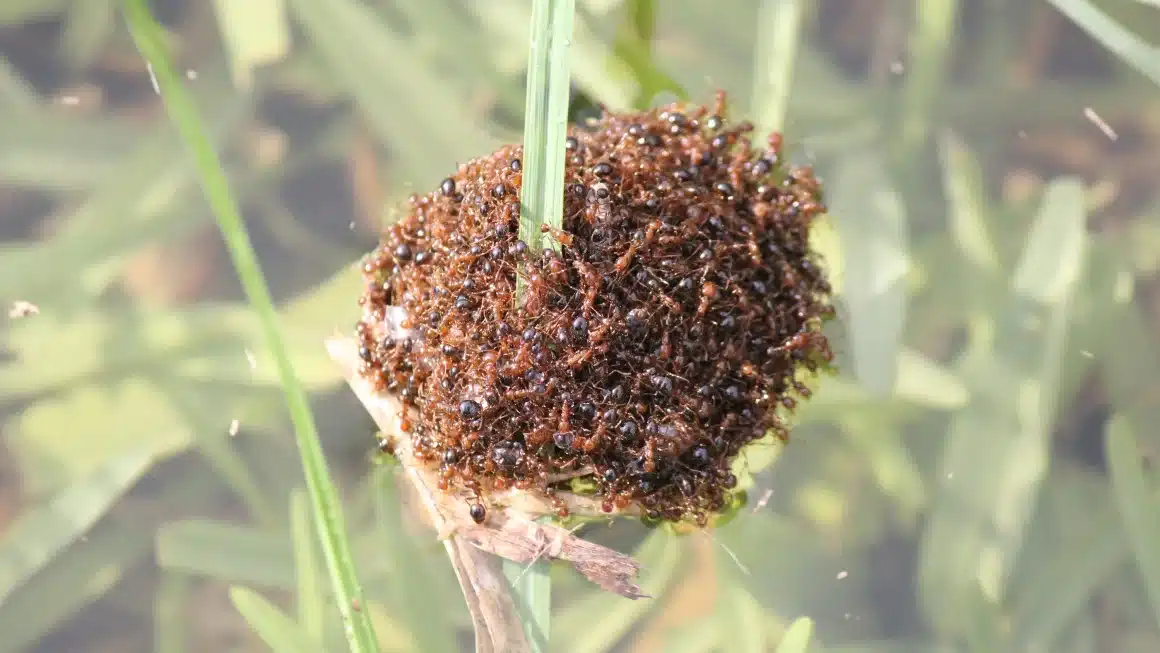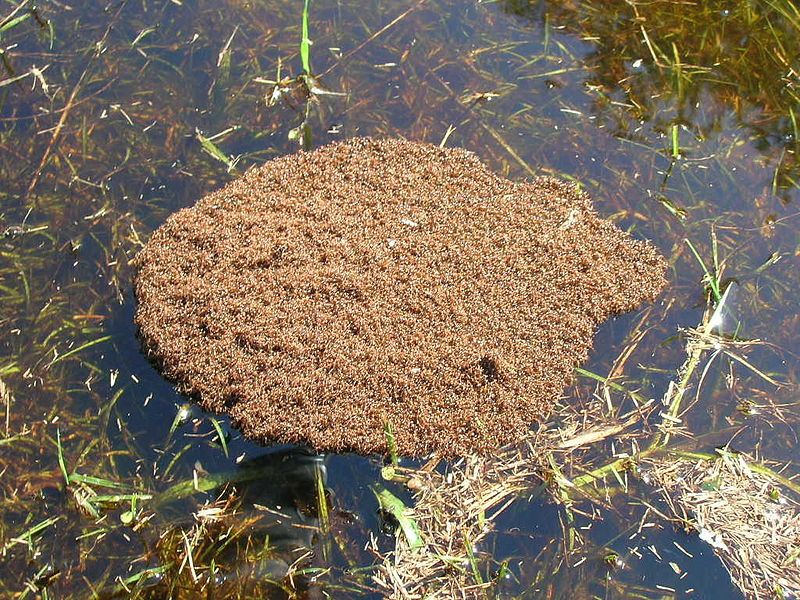Travel
BIRD: At 25, Backyard Bird Count Shows Power Of Citizen Science

Steve and Janet Kistler of Hart County, Kentucky, will definitely take part in the Great Backyard Bird Count when it starts on Friday. Since the now-global tradition began 25 years ago, they have done so yearly.
This will be the first count for Moira Dalibor, a middle-school math teacher in Lexington a couple of hours away. She’s leading a group of students and parents to a nursery for a data-gathering exercise.
They’ll be among hundreds of thousands of people worldwide, counting and recording over four days. The Great Backyard Bird Count, or GBBC, was completed by approximately 385,000 people from 192 countries last year.
“Every year, we see increased participation,” says Becca Rodomsky-Bish, project leader at the Cornell Lab of Ornithology in Ithaca, New York, which organizes the count with the National Audubon Society and Birds Canada.
Tens of thousands of people submitted checklists in India, which had the highest participation outside of the United States last year — a 28% increase from 2021.
This global data is fed into the eBird database, which scientists use to research bird populations, which have declined dramatically in recent decades. It’s part of a growing trend of “citizen science” projects in which volunteers gather data about the natural world for researchers to use.
And, according to Steve Kistler, the more people interested in bird watching, the better.
Many Watchers Use eBird
“It’s fun and important to get the numbers, but it’s just a joyful thing to do,” says Kistler, who leads watching trips locally and internationally.
Many bird watchers use eBird all year, and it has amassed massive amounts of data — often between 1 million and 2 million bird checklists per month from around the world in the last few years, according to Rodomsky-Bish.
These figures assist researchers in tracking the ups and downs of various species, which aids in determining the direction of conservation efforts.
“We’re losing the net number of birds worldwide,” says Rodomsky-Bish.
Cornell University researchers discovered 3 billion fewer birds in North America in 2019 than in 1970.
“The bad news is that the declines in the data are coming out strong and hard,” Rodomsky-Bish adds. “The good news is that we wouldn’t know if we didn’t have that data. And this enables many areas to take direct action.”
According to her, the pandemic contributed to the increased interest in the GBBC and birds in general.
“Birds were company during this period of isolation,” she says, and observing them “is an accessible way to connect with the natural world. There are flyers everywhere. You are not required to leave your home. They will arrive… They’re also charming. They’re entertaining and fascinating to watch.”
Birds were company during this period of isolation
Compared to other counts, such as Audubon’s 123-year-old Christmas Bird Count and the Cornell Lab’s Project FeederWatch, the GBBC is user-friendly.
How it works: Participants observe birds by looking out the window for 15 minutes or traveling to a nature preserve. Organizers recommend the Merlin bird ID app for distinguishing birds based on size, shape, song, or other characteristics. Along with their phones, many participants carry field guides and binoculars.
They then enter their discoveries into the eBird app.
“‘I can contribute to science — it’s simple,’ anyone can say. “If I can identify one bird in four days, I’ve done my job,” says Rodomsky-Bish.
She says that counting in February gives a good picture of the situation before many birds start their yearly spring migrations.
Dalibor, who teaches at the Redwood Cooperative School in Kentucky, has been learning how to use the Merlin app and researching local species. The children will use pencils and clipboards to record bird sightings, and parent volunteers will enter those numbers into phones.
“It’ll be authentic data we collected ourselves that real scientists will use. Being connected to the larger world has a purpose and action behind it, which is unique for them,” Dalibor says.
50 grackles fly by in a flock; you get pretty good at estimating
Ganeshwar SV, director of the Salem Ornithological Foundation in India, prioritizes instilling a love of nature in young children. He works with schools to get them involved in conservation programs, such as the GBBC, and says the goal is “not to count but to enjoy birds.”
“It’s not uncommon for children to wander around in rural areas and use catapults (slingshots) to kill them,” he says. “The same hands that used catapults to hit them are now building nest boxes and taking notes on birds and their behavior.”
He claims that the students do not have smartphones and “wouldn’t have seen a binocular in real life.” They keep track of their sightings in notebooks.
Steve Kistler, in rural Kentucky, advises beginners to “start easy, birding around the home. Or go out with a group that day.”
“If 50 grackles fly by in a flock, you get pretty good at estimating,” he says, dismissing exact counts. We don’t need to have it down to the last grackle for what you’re doing.”
Bird counts can also become competitive.
“If you can outnumber last year’s species count, that’s a good day,” Kistler says.
SOURCE – (AP)
Business
‘Inexcusable.’ Ryanair Says It May Have To Raise Fares This Summer Because Of Boeing

Ryanair may be forced to reduce flights and boost costs during the high summer this year because crisis-hit Boeing cannot deliver the promised planes.
Michael O’Leary, the CEO of Europe’s largest airline by passenger volume, stated in a widely reported press event Friday that air tickets could climb by up to 10% due to delays in aircraft delivery.
Boeing has faced additional safety and quality issues since early January when a piece of the fuselage on a 737 Max 9 operated by Alaska Airlines broke off mid-flight. Further issues have surfaced with some 737s afterwards, affecting Boeing’s production timetable. It has also postponed certification for two new versions of the plane.
‘Inexcusable.’ Ryanair Says It May Have To Raise Fares This Summer Because Of Boeing
According to O’Leary, Ryanair previously expected Boeing to deliver 57 Max 8-200 jets by the end of April. On Friday, the CEO stated that he was “pretty sure” the airline would acquire between 30 and 40 planes but “far less confident” about receiving between 45 and 50.
“We don’t really know how many aircraft we’re going to get from Boeing,” he said, according to Reuters.
A Ryanair representative told CNN that the stories about O’Leary’s media briefing were correct and that the business had nothing to offer.
O’Leary said that if only 40 aircraft are delivered, Ryanair may have to “announce some minor schedule cuts” by the end of March. This might increase plane fares by 5% to 10% this summer.
‘Inexcusable.’ Ryanair Says It May Have To Raise Fares This Summer Because Of Boeing
Demand for international travel increased dramatically last year, prompting airfares to skyrocket worldwide. Ryanair’s Ireland-listed shares have increased 69% since the beginning of 2023.
“It is inexcusable.” Boeing will attempt to justify its actions. “I believe we will receive some modest compensation from Boeing,” O’Leary added. “At the point our focus is getting the bloody aeroplanes.”
A Boeing (BA) spokeswoman stated that the business contacted customers about modifications to its delivery timetable. “We (are taking) the necessary time to make sure that every aeroplane we deliver is high quality and meets all customer and regulatory requirements.”
‘Inexcusable.’ Ryanair Says It May Have To Raise Fares This Summer Because Of Boeing
“We genuinely regret the impact this is having on our valued customer, Ryanair. We’re striving to address their issues and implement a thorough plan to improve 737 quality and delivery performance.”
O’Leary’s remarks come nearly a month after he voiced “a lot of confidence” in Boeing’s management. He congratulated Boeing’s CEO and CFO, David Calhoun and Brian West, for their efforts to turn around the company. “I think safety is their number one byword,” he remarked in a video uploaded to Ryanair’s website.
SOURCE – (CNN)
Entertainment
Rio De Janeiro Is Betting On Carnival For ‘Cooler’ Parties – And A Better Brazil

Rio’s government made its largest investment yet in 2024’s Carnival. If it pays off, everyone benefits.
Rita de Cassia Oliveira takes a quick break to rearrange a display of multicoloured earrings before returning to serve a group of tourists. They are choosing dazzling shorts and glittering bikini tops for this year’s Carnival street festivities. During this time, Oliveira trades her typical swimwear products for Carnival clothes, and she expects February’s income to increase compared to previous months.
“It’s the best time of year for those who work on the streets,” she explains, setting up pots of glitter at her outdoor shop on a popular Copacabana street corner.
Rio De Janeiro Is Betting On Carnival For ‘Cooler’ Parties – And A Better Brazil
Shopping in Rio de Janeiro picks up in the weeks leading up to Carnival. The festivities draw many national and international tourists to see the world-famous parades and block parties. But it’s more than simply a good time for Brazil; it’s also a moneymaker. Tourists spend millions during Carnival, creating thousands of temporary jobs in the city.
Rio de Janeiro is expected to earn a record 5.3 billion reais (£846 million; $1.06 billion) from tourism-related activities in February this year. The state government has invested the highest in Carnival preparations and celebrations for 2024, totalling 62.5 million reais. The infusion of capital has resulted in a record number of jobs and strengthened infrastructure to support tourism, and it is expected to provide long-term socioeconomic changes to the city.
“For every one Brazilian real invested in tourism in Rio, it brings a three to fourfold return,” says Ronnie Costa, president of Rio’s tourism board Riotur. The Carnival investment is well-timed. Brazil welcomed record numbers of international tourists last year, bringing $6.9 billion (£5.5 billion) into the Brazilian economy, a 1.5% increase over the previous best income achieved in 2014 when Brazil hosted the World Cup. The country’s Tourism Plan aims to reach $8.1 billion (£6.4 billion) by 2027.
In Rio, the government has been spending on infrastructure, security, and mobility to attract visitors. This includes more flights into the city’s major international airport and enhanced police presence in tourist areas. This year, Rio will have more than 12,000 military police officers on duty during Carnival, a 5% increase from the previous year.
Officials hope this will help to counteract Rio’s reputation for violent crime. The National Confederation of Commerce (CNC) reported that this image cost the state 3.3 billion reais (£536 million; $660 million) in tourism in 2023.
“The city needs to enable decent infrastructure to receive all these tourists, so the City and Rio State are making investments to create a good, positive experience,” says CNC’s chief economist, Felipe Tavares.
Rio has also invested 40.5 million reais (£6.5 million; $8.1 million) in samba schools, the clubs that organise the city’s iconic parades. The schools open to the public several weeks before Christmas, allowing visitors to view and participate in singing music, and dancing rehearsals.
“When schools have more money, they may spend on equipment, costumes and floats. Tourists will notice something neater, tidier and more sophisticated; a cooler avenue and cooler parties; and a better day-to-day experience’, says Carlos Werneck, president of the tourism organisation Visit Rio.
Rio De Janeiro Is Betting On Carnival For ‘Cooler’ Parties – And A Better Brazil
In addition, they’ve committed tens of millions of reais to prolong Carnival celebrations beyond the statutory five-day period. The capital has already helped pay for the typical block parties on weekends soon after New Year’s and will support the street celebrations that continue in the weeks after the parades, providing tourists with a Carnival experience in Rio during the first quarter of the year.
Tourism officials from Riotur and Visit Rio say there may also be plans for a Carnival-style celebration in the middle of the year.
Many Rio locals rely on the celebrations and subsequent visitors for income. According to Costa, investments in 2024’s Carnival have created 50,000 jobs, most benefiting socially vulnerable populations from low-income districts. Samba schools employ hundreds of seamstresses, musicians, performers, and organisers.
Full-time employees in Brazil are often paid an additional month’s income at the end of the year, known as the “thirteenth salary”. According to Oliveira, a street vendor in Copacabana, Carnival earnings are the equivalent of this incentive and an opportunity to pay off obligations and save. Rio officially registered 15,000 street vendors to work during block celebrations and parades this year, up from 10,000 last year.
Rio De Janeiro Is Betting On Carnival For ‘Cooler’ Parties – And A Better Brazil
“Carnival represents an important source of extra income for independent street vendors to increase their revenue during this period,” says Bruno Guerra, director of popular parties at Dream Factory, an event and entertainment firm. “This extra money helps support their families and pay additional expenses, often playing a fundamental role in the financial stability of these independent street sellers.”
However, Tavares emphasises that it is not just about profit. “When we have such a large development in Carnival and tourism, we see significant social improvements in the region,” he said. “Rio is getting more professional in the Carnival and tourism sectors. More people in tourism speak English and Spanish.
You can see options in two or three languages. Rio’s entire city and economy are adjusting to become an international and national tourism destination.”
In February, São Paulo state is set to receive a record 16.2 billion reais (£2.6 billion; $3.25 billion) in tourism revenue, over three times that of Rio state. Tavares attributes this to the region’s vastness. “We are seeing destinations that were not traditional for Brazilian Carnival, such as the states of Paraná, Rio Grande do Sul, Minas Gerais and São Paulo growing a lot every year.”
This is a beautiful time for Rio’s street vendors, such as Oliviera. She states, “It’s like Christmas for us.”
SOURCE – (BBC)
World
How Deadly Fire Ants Are Surviving Australian Floods: A Perilous Journey

Red fire ants are constructing rafts to travel on flood waters in Queensland, northeastern Australia, as extreme weather threatens the highly invasive species’ expansion across the country.
“The recent heavy rainfall and wild weather in the region could accelerate the spread of fire ants, one of the world’s worst invasive species,” Reece Pianta, advocacy manager at Australia’s Invasive Species Council (ISC), said in a statement Tuesday.
“Fire ants are more active before or after rain, and they can form large floating rafts that move with water currents to establish footholds in new areas,” Pianta said, advising locals to be vigilant. The ISC posted a video on social media showing fire ants migrating in raft formation.
“It’s incredibly simple to do your part. Just snap a picture of any unusual ants and report them,” he said.
How Deadly Fire Ants Are Surviving Australian Floods: A Perilous Journey
Queensland has experienced severe weather and flooding in recent weeks. Last month, the remnants of Tropical Cyclone Jasper poured severe rains to Cairns, cutting the city off. Flooding also stranded many of the more than 150,000 residents on their rooftops.
According to ISC modelling, fire ants will spread to “every corner of Australia” if the Queensland outbreak is uncontrolled.
The ISC stated that it just obtained a 70 million Australian dollar ($46 million) four-year commitment from Victoria to support the national fire ant eradication effort. Pianta believes eradication is still attainable.
Solenopsis invicta, a red imported fire ant native to South America, is an omnivorous species that damages crops and livestock. Its deadly sting causes pustules and allergic responses and can be fatal to humans. Over the past century, it has expanded over the United States, Mexico, the Caribbean, China, and Australia. It made its maiden appearance in Europe last year.
How Deadly Fire Ants Are Surviving Australian Floods: A Perilous Journey
Australia’s first fire ant outbreak occurred in 2001, according to the ISC. According to the statement, the country has brought seven infestations under control, stretching from Queensland’s capital, Brisbane, to the border with the neighbouring state of New South Wales (NSW), to first contain and then eradicate the infestations.
However, in November 2023, the ants were discovered in New South Wales, raising concerns that they could spread to the Murray-Darling river basin and out of control.
At the time, Tara Moriarty, the Minister for Agriculture in New South Wales, stated that “red imported fire ant are a terrible invasive pest, which cause serious social, economic, and environmental harm.”
How Deadly Fire Ants Are Surviving Australian Floods: A Perilous Journey
“Our teams are focused on limiting further spread, and encouraging reporting and compliance through a targeted communications campaign,” she said.
Red ants can spread swiftly, but human activities, such as cargo containers or shipments of potted plants or soil, usually exacerbate an infestation.
SOURCE – (CNN)
-
Celebrity5 months ago
Shane MacGowan, Lead Singer Of The Pogues And A Laureate Of Booze And Beauty, Dies At Age 65
-
Entertainment5 months ago
Robert Downey Jr. Won’t Be Returning To The Marvel Cinematic Universe As Tony Stark
-
Politics5 months ago
Former US Secretary Of State Henry Kissinger Dies Aged 100
-
Politics5 months ago
Unveiling the Power and Influence of The Conservative Treehouse
-
Celebrity5 months ago
WWE Hall Of Famer Tammy ‘Sunny’ Sytch Sentenced To 17 Years In Prison For Fatal DUI Crash
-
Sports4 months ago
Saints’ Aggressive Play-Calling Ends Up Coming Back To Hurt Them In Loss To Rams

























































